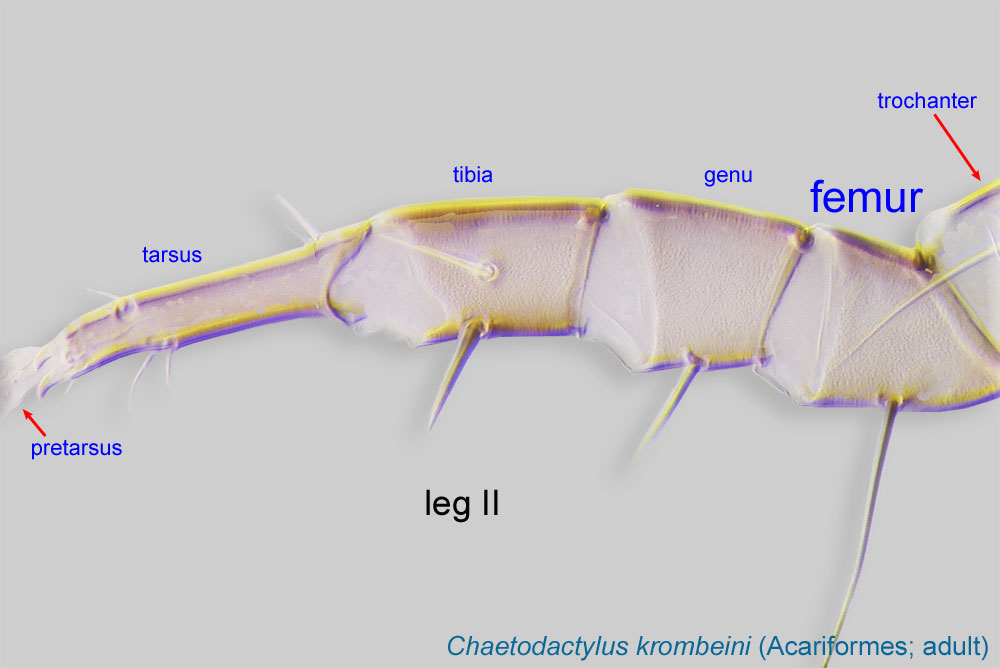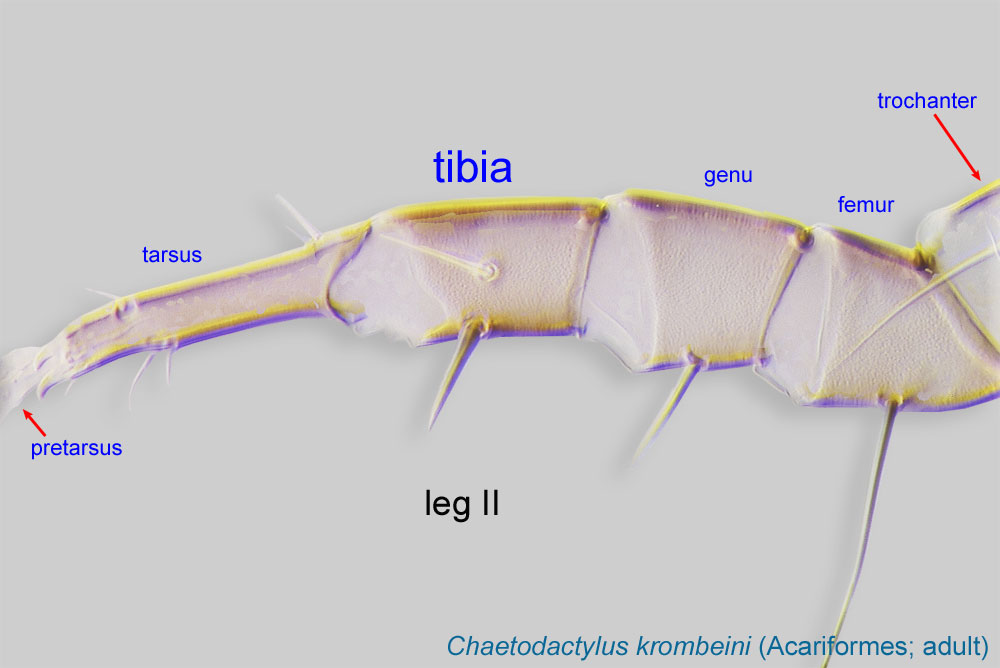neutral to beneficial; probably feed on small invertebrates in bee nests
Nodele Muma, 1964
Superorder Acariformes » Order Trombidiformes » Suborder Prostigmata » Infraorder Eleutherengona » Hyporder Raphignathina » Family Cheyletidae » Genus Nodele
Nodele calamondin Muma, 1964
Female: With pair of lateral teeth on rostral shield (Fig. 1).
Female: Palpal claw has a single basal tooth (Fig. 1). Palpal femurfemur:
Leg or palp segment (also known as podomere or palpomere) between genu and trochanter. In ParasitIformes can be subdivided into telofemur and basifemur.
 with 4 setae (Fig. 2). Propodonotalpropodonotal:
with 4 setae (Fig. 2). Propodonotalpropodonotal:
Pertaining to dorsal propodosoma (prodorsum).
and hysteronotalhysteronotal:
Pertaining to dorsal hysterosoma.
shields well-developed. Tarsal claws I-IV are subequal (Fig. 1). Tibiatibia:
Leg or palp segment (also known as podomere or palpomere) between tarsus and genu.
 I with five setae.
I with five setae.
The nominal subgenus Nodele does not contain bee-associated mites. A key to species is available for this subgenus in Summers and Price, 1970Summers and Price, 1970:
Summers, F. M. amp; D. W. Price. 1970. Review of the mite family Cheyletidae. University of California Publications in Entomology 61: 1-153.. The only described bee-associated mite species belongs to the subgenus Aztecocheyletus. Diagnostic character states for this subgenus and species are given in Bochkov and Klimov, 2004Bochkov and Klimov, 2004:
Bochkov, A. V. amp; P. B. Klimov. 2004. A new predaceous mite, Nodele ( Aztecocheyletus ) conquistador subg. n., sp n. (Acari: Cheyletidae), phoretic on a bee Aztecanthidium tenochtitlanicum (Hymenoptera: Megachilidae). Acarina12 : 23-27..
Neotropical (subgenus Aztecocheyletus, bee-associated mite), Holarctic, and Oriental regions (subgenus Nodele, general predators).
Megachilid bee Aztecanthidium tenochtitlanicum
Permanent permanent:
associated exclusively with bees or their close relative, wasps; cannot live without these hosts
(for the subgenus Aztecocheyletus only)
Species of the genus Nodele, subgenus Nodele live in pine forest litter, dried leaves, galleries of bark beetles, or in association with book lice. They are probably general predators. The single species of the subgenus Aztecocheyletus, N. (A.) conquistador has been found in association with the megachilid bee Aztecanthidium tenochtitlanicum in Mexico. This mite species is probably specific to its host since there are several records indicating non-random association. This species probably preys on small invertebrates in the bee nest.